Ekaterinburg is one of the biggest cities in Russia. It was founded as the fortress-plant upon the Ural River Iset by the associates of Russian Emperor Peter the Great V.N. Tatichev and V. I de Genin. The day when the test start of swages was put into practice is considered to be the birthday of the city - 7 (18) November, 1723.
The name of “Ekaterinburg” emphasized the Capital characteristics of the new city. Ekaterinburg is the city of Empress Ekaterina I and St. Ekaterina the patron of mining.
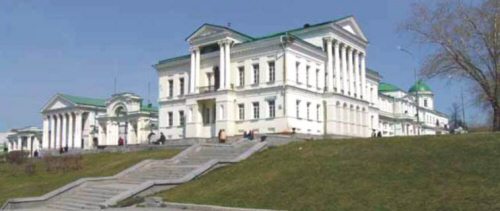 The population of present city is 1 337 000 people, that is 30% of the population of Sverdlovsk Region. It takes the 4th place among the most populous cities in Russia.
The population of present city is 1 337 000 people, that is 30% of the population of Sverdlovsk Region. It takes the 4th place among the most populous cities in Russia.
In May 2000 Ekaterinburg became the administrative center of The Ural Federal District. Headquarters of Volga Ural Military District is also located here.
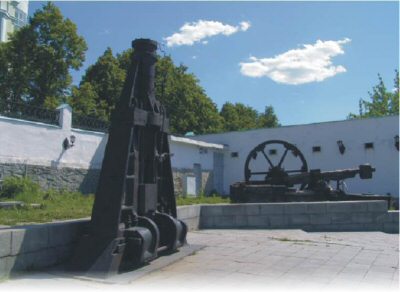 Modern Ekaterinburg is the center of heavy engineering industry the leaders of which are Uralmash, Uraltransmash, Uralkhimmash, Electrotyazhmash; precision instrument-making industry, which is based on unique science intensive techniques. The latest examples of engineering are created here, many of which don't have analogues in the world. More than 170 exhibitions with foreign participants are held annually in Ekaterinburg.
Modern Ekaterinburg is the center of heavy engineering industry the leaders of which are Uralmash, Uraltransmash, Uralkhimmash, Electrotyazhmash; precision instrument-making industry, which is based on unique science intensive techniques. The latest examples of engineering are created here, many of which don't have analogues in the world. More than 170 exhibitions with foreign participants are held annually in Ekaterinburg.
Ekaterinburg is an influential center of financial and bank activity, the city of developed trade infrastructure, tourist's, hotel, cultural and entertainment services. About 30% of able-bodied citizens are employed in small- and middle-scale business.
With all this going on, Ekaterinburg is the biggest traffic center with branchy railway lines, two airports, two bus stations and Metro. “Air Bridge” connects Ekaterinburg with 40 countries, the area of Sverdlovsk Railway System is about 500 thousand square km. The main line crosses 3 time zones, the rivers Ob', Irtysh, Kama, the frontier between Europe and Asia, and the northward goes beyond the polar circle. Bus communication realizes with Perm', Chelyabinsk, Tumen' and Kurgan regions, with cities if Bashkiria, Tatarstan, Khanty-Mansiysk Autonomous Okrug and north Kazakhstan.
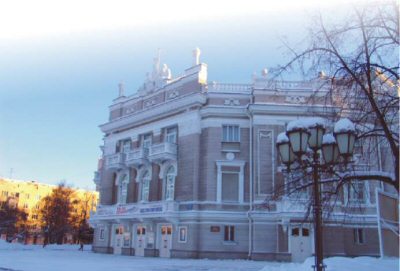 Modern Ekaterinburg is the city of great scientific and cultural power. 126 scientific organizations, 15 state and 20 non-state educational establishments work here. There are 22 theatres, 2 philharmonics, more than 40 museums, about 35 exhibition halls and more than 40 concert halls and stages, 60 libraries, the Zoo, aqua park, several scores of stadiums, sheltered sport halls and sport palaces in Ekaterinburg.
Modern Ekaterinburg is the city of great scientific and cultural power. 126 scientific organizations, 15 state and 20 non-state educational establishments work here. There are 22 theatres, 2 philharmonics, more than 40 museums, about 35 exhibition halls and more than 40 concert halls and stages, 60 libraries, the Zoo, aqua park, several scores of stadiums, sheltered sport halls and sport palaces in Ekaterinburg.
The opening of 10 consulate establishments, the first of which were the British Council and American Informational Center, highlights the rising prestige on the international scene. About 200 foreign companies' representative offices and filials work in Ekaterinburg. Several thousands of tourists visit Ekaterinburg every year.
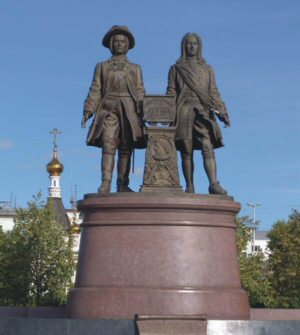 The richest industrial, scientific and cultural potential together with advantageous geopolitical location on the border of Europe and Asia guarantee Ekaterinburg favorable future prospects in the 21st century.
The richest industrial, scientific and cultural potential together with advantageous geopolitical location on the border of Europe and Asia guarantee Ekaterinburg favorable future prospects in the 21st century.
CHESS IN EKATERINBURG
The history of chess in Ekaterinburg has been lasting for about two centuries and is worth mentioning in our booklet. Even in the 17th century this game was very popular among the representatives of working class as well as among the nobility. Famous Russian Prince Demidov gave significant financial support in the organization of All-Russian tournaments.
A famous scientist, historian and mining explorer V. Tatischev also contributed to the popularization of the game. In his files that were found in one of the copper-smelting plants there was an interesting note. It tells us that even in the year of 1734 Tatischev taught people at his plants to play chess. Then chess development slowed down a little for several years. Only a few tournaments were held at the assistance of sponsors. These tournaments had little participants and even less audience. There were only a few real chess players at that time.
The situation began to change by the 90th of the 19th century. This change was connected with the personality of a talented Russian chess master S. Levitsky who had arrived to the Urals. Such eminent masters as F. Duz-Hotimirsky, I. Boleslavsky, Georgy and Valentina Borisenko also lived and worked in our region.
The Ural Region is especially proud of its repre-sentatives who praised Sverdlovsk grand masters' school all over the world and proved to be of the top level. Among them there are such masters and grand masters as: V. Batygin, N. Rashkovsky, M. Ulybin, G. Ilivitsky, M. Sorokin, M. Solovjev, A. Glyanets, A. Vaulin, A. Terentjev, A. Lysenko, L. Totsky, E. Ragozin, S. Vokarev, A. Shariyazdanov, R. Ovechkin, P. Skachkov and many others.
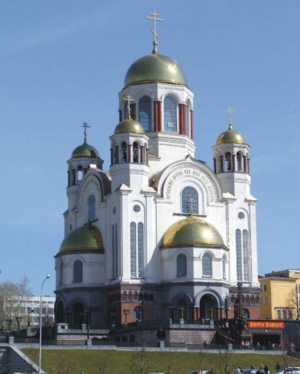 Anna Daybo-Vahonina became the first woman chess player who represented our region in All former Soviet Union and Russian Republic tournaments. She played an important role in the development of chess in the Ural Region.
Anna Daybo-Vahonina became the first woman chess player who represented our region in All former Soviet Union and Russian Republic tournaments. She played an important role in the development of chess in the Ural Region.
The period of the 40th-50th of the last century is closely connected with the names of Temma Filanovskaya , 3 times champion of the former Russian Soviet Federative Republic (RSFR) and Rosa Anischenko, RSFR Girls champion. The second half of the last century was distinguished by the appearance of new chess stars: Lyudmila Saunina and Yulia Demina. Due to her active style of playing Saunina became the first women's chess master in the Ural Region. Yulia Demina's achievements are also great. She has won numerous titles starting with Junior Chess Championships up to her best results the 1st of All-Russia Championship and RSFR People' Sport Day ( Spartakiada ) as Sverdlovsk' team member.
Fortunately the achievements of the Ural chess school have been succeeded. The main hopes of the forthcoming championship are set upon Alexandra Kostenjuk and Maria Kursova.
Alexandra Kostenjuk was born on the 23th of April, 1984 in the town of Perm. At present she is the international chess Grand Master, women's chess (1998) and international chess master, men's chess (2000). In November 2004 in FIDE Congress she was given the title of the international GM, men's chess. Thus Sasha became the 10th woman- player in the history of chess who had gained this title. Besides she is the world vice-champion 2001, European champion 2004 and Russian champion 2005, women'chess. She takes the 5th position in the world women's chess rate.
Maria Kursova as well as Alexandra Kostenjuk started playing chess at the age of 5. Little Masha was captivated by the game and soon she became the world girls' champion U-10. Among her present achievements there are gold and silver medals won in European Girl Championship. Masha was 4 times Russian Girls champion and 2 times a winner. At present Maria has the title of international master, women's chess and now she is fighting for the title of GM. In 2005 Maria became Russian champion as a member of “ABC” team. She participated in many tournaments in lots of European countries Spain, Greece, Austria, France, Czech Republic, Estonia and the republics of former Yugoslavia. Her presence in the World Chess Championship 2006 became possible due to Mr.K. Ilyumzhinov who had accepted an offer of the Championship Organizing Committee to list Maria for fighting in FIDE President nomination.
The devoted chess lovers of our region are waiting for the beautiful play of all the participants and wish our compatriots to win.
|



